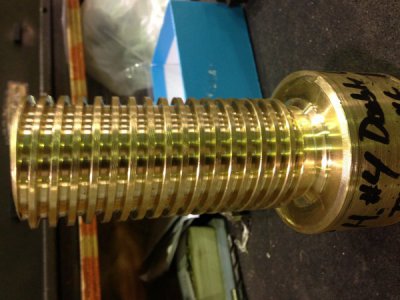I cut a double lead every couple of years and i split the thread with the chase dial. Its a 4 pitch thread which would be a 2 pitch lead. On our old monarch at work, I catch any line, then for the second lead I catch what would be a quarter line. I just mark the start points with a sharpie. I always catch this mark before a line. never tried it after a line. I used to turn the compound 180 degrees and dial off the pitch, but its much faster to split it. I came across this method by accident one night. I was threading an even pitch thread and not watching my chase dial and I accidentally split the thread. I just stopped the lathe and looked to see what I did wrong, I didnt think you could split an even thread. An odd thread should be even easier, you could catch a numbered line then a non numbered line i would think. On our tool-mex lathes, they have 8 numbered lines and 8 half lines. when I make the same thread on it, I catch 2 opposing lines then i catch what would be a quarter line just ahead of the line I caught. I mark theses with a sharpie also. Some where on here I posted a pic called Double Lead Left Hand Acme. The Pic is the test piece I made so I could make the nut that was needed. Hope this helps!
View attachment 130790


